 UPDATED REVIEW – June 1, 2024 – Donner DDP-100, DDP-90 Digital Pianos | approx $600 to $750 for the DDP-100 and approx $550 to $599 respectively, depending on sale prices at the time you are looking | The Donner line of pianos is from a relatively newer company (about 11 years old) from China called Eastar musical instruments. The Eastar company has a wide range of different musical instruments and devices under the Eastar name, the Donner name, and the Moukey name. Under the Donner name they offer a fairly large array of digital pianos and keyboards and other musical products for what seems to be reasonably low prices compared to the big brand names of digital pianos like Yamaha, Casio, Kawai, Korg, and Roland. But my experience over the years has been, you normally “get what you for for.” So just because something looks good on the outside and is a cheap price does not necessarily mean it is going to be a good digital piano for your purposes
UPDATED REVIEW – June 1, 2024 – Donner DDP-100, DDP-90 Digital Pianos | approx $600 to $750 for the DDP-100 and approx $550 to $599 respectively, depending on sale prices at the time you are looking | The Donner line of pianos is from a relatively newer company (about 11 years old) from China called Eastar musical instruments. The Eastar company has a wide range of different musical instruments and devices under the Eastar name, the Donner name, and the Moukey name. Under the Donner name they offer a fairly large array of digital pianos and keyboards and other musical products for what seems to be reasonably low prices compared to the big brand names of digital pianos like Yamaha, Casio, Kawai, Korg, and Roland. But my experience over the years has been, you normally “get what you for for.” So just because something looks good on the outside and is a cheap price does not necessarily mean it is going to be a good digital piano for your purposesINTRODUCTION
In my opinion what the Donner brand is trying to do is to saturate the market with lots of ads on Amazon, Facebook, and other social media so they can try to get “market share” that way. But make no mistake, the Donner brand under the Eastar company is designed and manufactured in China and the products they produce can be good for the price, but in no way do they come close to the piano playing authenticity of the major brands.
DONNER DDP-100 & DONNER DDP-90
I am referring to both the Donner DDP-100 and DDP-90 in this review because they are the identical digital pianos with the exception of the cabinet design and internal speaker system. They both have the same key action, same piano sound engine, same pedaling, and same electronic functions and connectivity. The DDP-100 has the “traditional” cabinet design with the slide-out key cover and the DDP-90 has the compact, contemporary cabinet design with the flip-top key cover.
 When it comes to digital pianos the most important aspects are the key action, piano sound, and pedaling, along with the internal speaker system. Also, many people want the piano to look nice especially if it’s a furniture cabinet style piano. However, just because you might see a video demo of a particular piano showing how it looks, how it functions, and how it sounds, does not mean that’s all there is to it. It’s the key action that is by far the most important part of any piano…it is the thing that you cannot “feel” in a video or change or alter on a digital piano after you get it.
When it comes to digital pianos the most important aspects are the key action, piano sound, and pedaling, along with the internal speaker system. Also, many people want the piano to look nice especially if it’s a furniture cabinet style piano. However, just because you might see a video demo of a particular piano showing how it looks, how it functions, and how it sounds, does not mean that’s all there is to it. It’s the key action that is by far the most important part of any piano…it is the thing that you cannot “feel” in a video or change or alter on a digital piano after you get it.ADVANTAGES OF DIGITAL PIANOS OVER ACOUSTIC PIANOS
The Donner DDP-100 (and DDP-90) is a similar digital piano as compared to the “mid-century retro cabinet version called the DDP-80 (which I have previously played and reviewed). Although the cabinets are a different design, they both have just one sound and try
to do one thing…be a substitute for a real acoustic piano. The DDP-100 has a piano sound and 88 weighted keys along with 3 pedals and at a low price. Most digital pianos do not go out of tune because they have permanent tuning so they will never need tuning unlike a real acoustic piano that will always constantly need to be tuned by a professional tuner-technician. That is a distinct advantage of a digital piano over an acoustic piano.
DDP-100 & DDP-90 CABINET
Some people want an attractive cabinet with a nice design to it and in my opinion the DDP-100 does have an attractive cabinet with front support legs, a music rack to hold your sheet music up, and the piano is available in either black or white matte finish along with a built-in slide-out key cover to cover up the keys when not in use. So when it comes to “looks” the DDP-100 does have it. The DDP-90 has the compact, contemporary appearance and the key cover folds down flat over the piano top and also acts as the sheet music support when the key-cover is open.
However, regardless of what you might see on the Donner web site about the cabinet on the DDP-100 (or DDP-90) being “wood,” it is not solid core or even veneer wood on any part of the cabinet. It is MDF fiberboard just like all the rest of the digital pianos including the name brands. That is not a bad thing because good fiberboard can be durable and made to look attractive. But actual traditional wood on the DDP-100?…definitely not.
In my opinion the Donner brand tries to make their digital pianos seem better than they are. An example of this is when they say their pianos are made of wood as I just mentioned. Most people think of “wood” as real veneer wood or solid core wood, and the Donner pianos are neither. When piano companies have to “stretch the truth” to make their products seem better than they are, then I tend not to trust them on other things they say such as when Donner also says they have “3 dimensional sound.” How do they define “3 dimensional sound” and what is it. When you have 2 speakers and 2 amps built into the piano, that sound is 2 dimensional “stereo,” not 3 dimensional sound. Take a look at the ad they put out in the photo on the left and what they say.
COMES WITH TRIPLE PEDAL UNIT
Acoustic pianos typically have 3 pedals below to control the sustain, sostenuto, and soft pedal functions and the DDP-100/DDP-90 digital pianos have a similar triple pedal unit which is also a nice feature in this price range. Other digital pianos may have a stand and/or pedals but those stands and triple pedal units might be an extra charge because they are option. But…just because there are 3 pedals on the Donner digital pianos does not mean those pedals work or function like a real acoustic piano. I will discuss that later on in this review.
DDP-100/90 BASICS
Another part of the Donner DDP-100 which is important is the 88 weighted keys, commonly called a “weighted key action.” As I mentioned earlier, the DDP-100 has weighted keys and feels more like a piano than a simple inexpensive portable keyboard. So is the key action in this model “weighted” as Donner claims that it is? The answer is yes. But there is an issue with that “weight” and I will talk about that later in this review.
The internal speaker system of any digital piano is important not only for how much power it has, but how it projects the sound. The DDP-100 has a 50 watt, 2-speaker system and is plenty loud based on my playing experience with it, so there is no problem with speaker-amplification power. Most digital pianos in this price range (even the top name brands) don’t have as much as 50 watts of total power in their digital pianos.
THE “DOWN-SIDES”
KEY ACTION, PIANO SOUND, PEDALING
KEY ACTION
The #1 most important thing in any piano is the key action and how it moves. Is it heavy, light, medium when it comes to how much force from your fingers it will take to press down the keys? Also, how much force do the keys have when they are coming back up after you press down the keys. To have e a comfortable and responsive key action you definitely do no want the keys to feel like they are “heavy.”
When I played the Donner DDP-100, and along with the DDP-90, the keys feel “heavy” when you are playing them and this is not unusual for the Donner pianos in general because other Donner models have this issue as well. The DDP-100 white keys have a very firm down-weight (aka: touch-weight) and those keys take more finger force to push down than a real acoustic piano, as well as compared to some of the top name brands digital pianos like Kawai, Yamaha, and Casio.
On the flip side, when the white keys on the DDP-100 and DDP-90 (they have the same key action) come back up after you press them down (upweight), that “return force” is fairly firm. This more forceful key return makes it feel like the keys are heavy because they come back up harder than normal as compared to a real acoustic piano or some of the name brand digital pianos . In independent consumer reviews of this model there are people who have mentioned the “heaviness” of the key action.
It’s not that you cannot play the keys and make music on these 2 models, but it is definitely not comfortable for most people and this can cause some fatigue in the fingers, hands, and wrists for some people. To add to that experience, the black keys on the DDP-100 and DDP-90 are noticeably heavier than the white keys. On a real piano both the black and white keys should be more similar in weight/movement, and if the black keys are going to be a different weight than the white keys then you will want them to be a bit lighter and not noticeably heavier than the white keys.
So when it comes to the physical key action on the Donner DDP-100, “it is what it is”…you cannot change it. So you better be sure this is something you can “live with” because once you get it…you got it. Also, I noticed that when you go from one key to the next using the white keys for example, the key weight is not always consistent. I am not surprised by this because in a low priced cabinet digital piano like these two models, the key action is only going to be so good and definitely not perfect or being able to compare it against a name brand digital piano key action or acoustic piano key action.
The ability of the internal electronic key sensors/contacts to keep up with your playing can be very important as you become a better player. Without the proper key sensors/key contacts under each each, the playing experience can be uneven depending on how you are playing the keys. It’s not always what you “see” in a digital piano that counts, but it’s what you “cannot see” in a digital piano that can be even more important. This is true of all digital piano brands and not just Donner. The key contacts in this photo are examples of what they can look like from another piano brand.
PIANO SOUND
The next thing to consider is the piano sound in this model because there is just one sound (piano) and no other options, so that sound needs to be as real as possible in this price range. The only way you can know if the piano sound in the DDP-100 is similar to a “real” piano is by knowing what a real acoustic piano sounds like. With that in mind, the piano sound in DDP-100 sounds very artificial and fake to me as compared to a real acoustic piano.
But again, perhaps you will be happy with the sound because you don’t know any better…and that’s fine. But for anyone to suggest these 2 Donner models sound like actual acoustic pianos means those people really have no idea what a good acoustic piano actually sounds like. So just know that this Donner piano is definitely not a good substitute for a real piano or better digital piano in terms of actual piano sound realism.
Even on some of the new 61-note keyboards out there like the new Casio CT-S1 for $219, the acoustic piano sound in that model sounds much more realistic than the Donner DDP-100 and DDP-90 with regard to authenticity. The same is true for the new Casio CDP-S360 88-key digital piano with weighted key action at $599 and the Yamaha P-125 digital piano at $699. Those models are substantially better and more realistic than the Donner, but they do not come in the full furniture cabinet style with built-in key cover.
Also on the Donner DDP-100 and DDP-90, the piano sound response seems to be inconsistent sometimes from one key to the next. Occasionally the piano sound is more muted or brighter and depending on what song you are playing and how you strike the keys. The piano sound doesn’t come out consistently the same way when playing different keys, at least it was that way when I played it. But for a beginner or intermediate beginner you likely won’t notice this anomaly.
POLYPHONY MEMORY
When it comes to “polyphony” and how many notes (in mono) that can be sustained or played at any one time, this model has 128 notes of polyphony power, which is plenty for the average player. That means that when you’re playing a more complex piece of music you will likely not run our of piano note memory. So Donner has a reasonable amount of polyphony power in these two models in their price range.
PEDAL FUNCTIONS
There is an old saying that says “you get what you pay for,” and in the case of digital pianos that statement is very true. A digital piano can try to “look the part” but it may not be able to play the part as far as really playing like a piano. Even the pedaling on the DDP-100 is quite basic because the sustain pedal is just an off & on sustain function (like a keyboard would have) whereas on the better digital pianos you have a variable sustain function which is called “half-damper” and that feature provides different levels of sustain as you press down the right sustain pedal.
BETTER OPTIONS?
To sum it up, the key action, piano sound realism and response, and the sustain pedal function are mediocre at best in these two Donner models. In reality there are much better options from the name brands like Casio, Yamaha, Korg, etc, but they generally will cost you a bit more money to get them in a furniture type cabinet. You especially be concerned with the key action in a new digital piano that would be more enjoyable to play as opposed to the heavier key action in the DDP-100/DDP-90.
In my opinion a very good option that is much more realistic as a piano and also offers more features would be the newer and very popular Korg B2SP at $649 (with $100 instant rebate) which comes in both black or white cabinet. It is an impressive digital piano for key action, sound realism, and pedaling and a few of the technology features are also very impressive.
Ultimately and hopefully you are actually “playing” the piano, and if so and you should want that experience to be the best it can be for the price range you can afford. With that in mind I would recommend you look at something else other than the Donner DDP-100 or DDP-90. Buy the Donner if you must (its cabinet could be the motivating force in your decision), but you’d be musically better off with this impressive Korg B2SP at $649 (includes the furniture stand and triple pedal with half-damper feature), or the new Casio CDP-S360 at $599 (stand optional), Casio PX-S1100 at $699 (stand optional), or the Yamaha P-225 at $749 (stand optional).
DONNER WARRANTY & RELIABILITY
In terms of longevity and warranty, I personally don’t have experience with how long the Donner pianos will last since they have not been around very long in the US. Also, they are an-off brand as compared to the name brands that technicians are used to working with, The technicians out there who can repair digital pianos have likely not heard of Donner before so it just depends what the piano needs if it should need some repair.
FINAL THOUGHTS
It’s important to note that all of these Donner cabinets are made out of relatively inexpensive MDF board (pressed wood) and the cabinets usually contain just one main circuit board and a couple of smaller speakers and amps, so there really is not much to them. But that’s ok as long as they are in your price range and you can enjoy playing those pianos Playing music on a digital piano can be an awesome experience and something you can do for many years. So do it “right” the first time and get something that will give you the kind of piano playing experience that will make you smile! If you think either the Donner DDP-100 or DDP-90 will do that, then buy it!
If you want more info on new digital pianos and LOWER PRICES than internet discounts, please email me at tim@azpianowholesale.com or call direct at 602-571-1864.
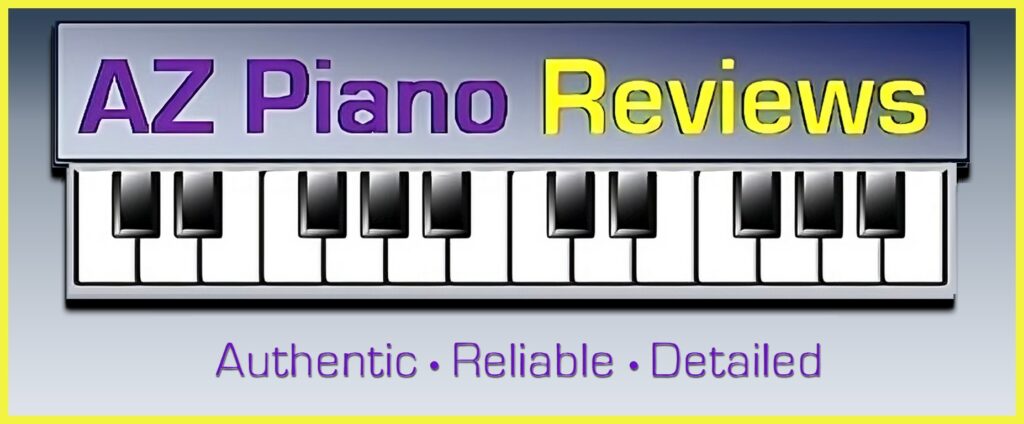




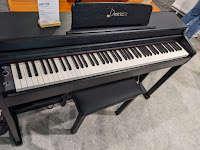


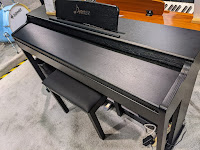

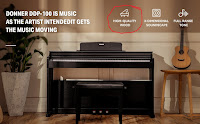
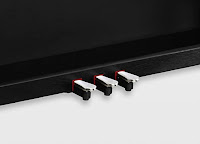

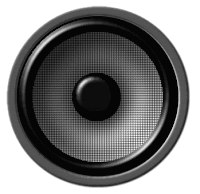


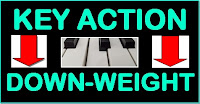
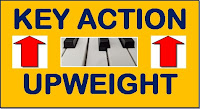
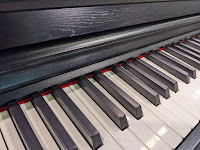
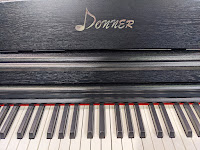
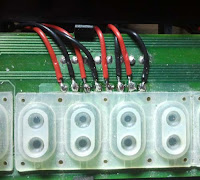
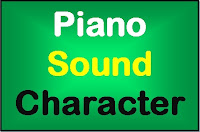

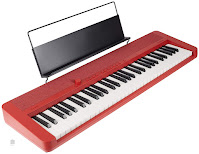
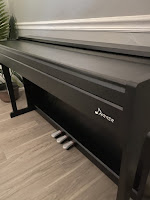


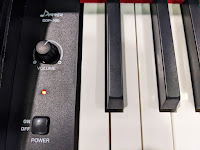









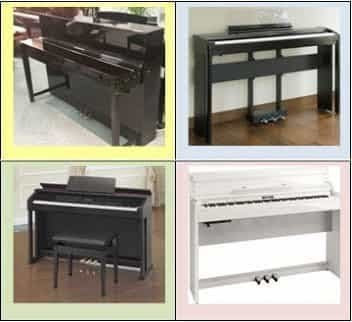


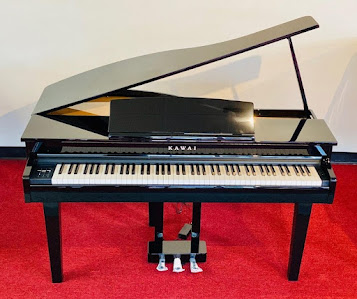
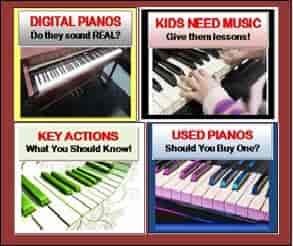
November 28, 2022, I would like to express my appreciation for your Technical Report on the DONNE DD90 and DDP100 Digital Piano!
I study and practice on a Baby Grand Piano, and over the Years…my "Hearing" has been educated, and I realize, when I "Hear" the Digital Pianos…that it is NOT the same. So, I continue with my Baby Grand Piano, where I feel very "Safe and Satisfied" when I play any score of the great composers. Digital Pianos…are great for a Party, a Club, etc. Although, I recognize that there are some Digital Pianos from the company "Yamaha, Roland, Casio, Korg" and others…that have a "SOUND…" quite similar to a "Grand Piano".
Thank you once again…, Respected and Admired Mr. "Tim" Happy holidays!
NOTE: I have learned a lot from you!